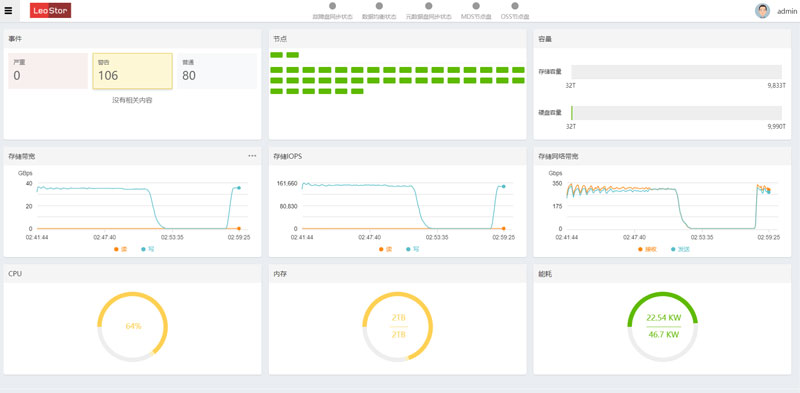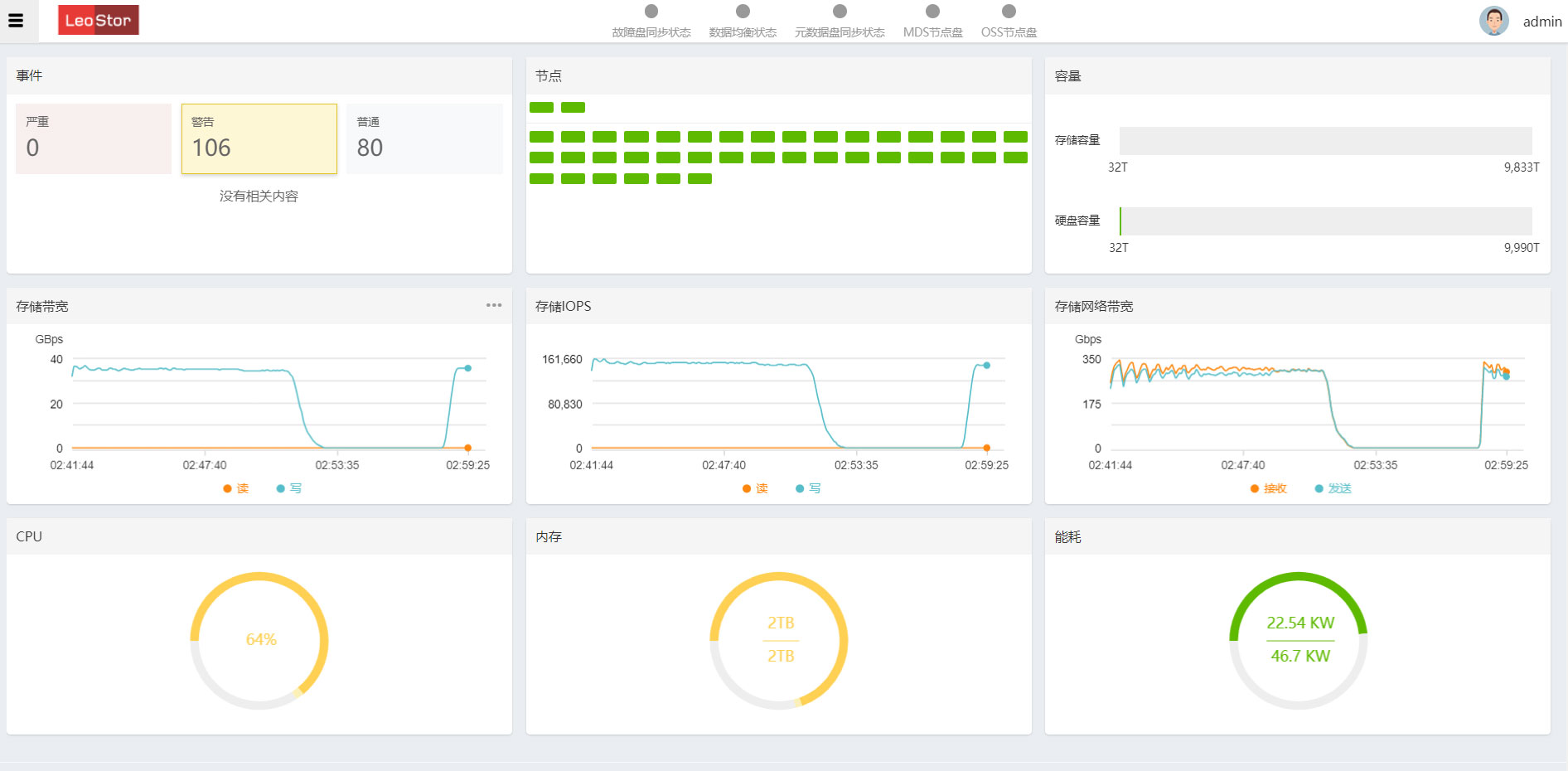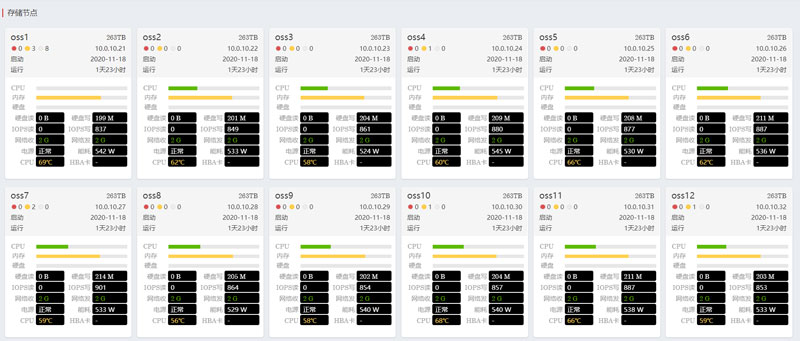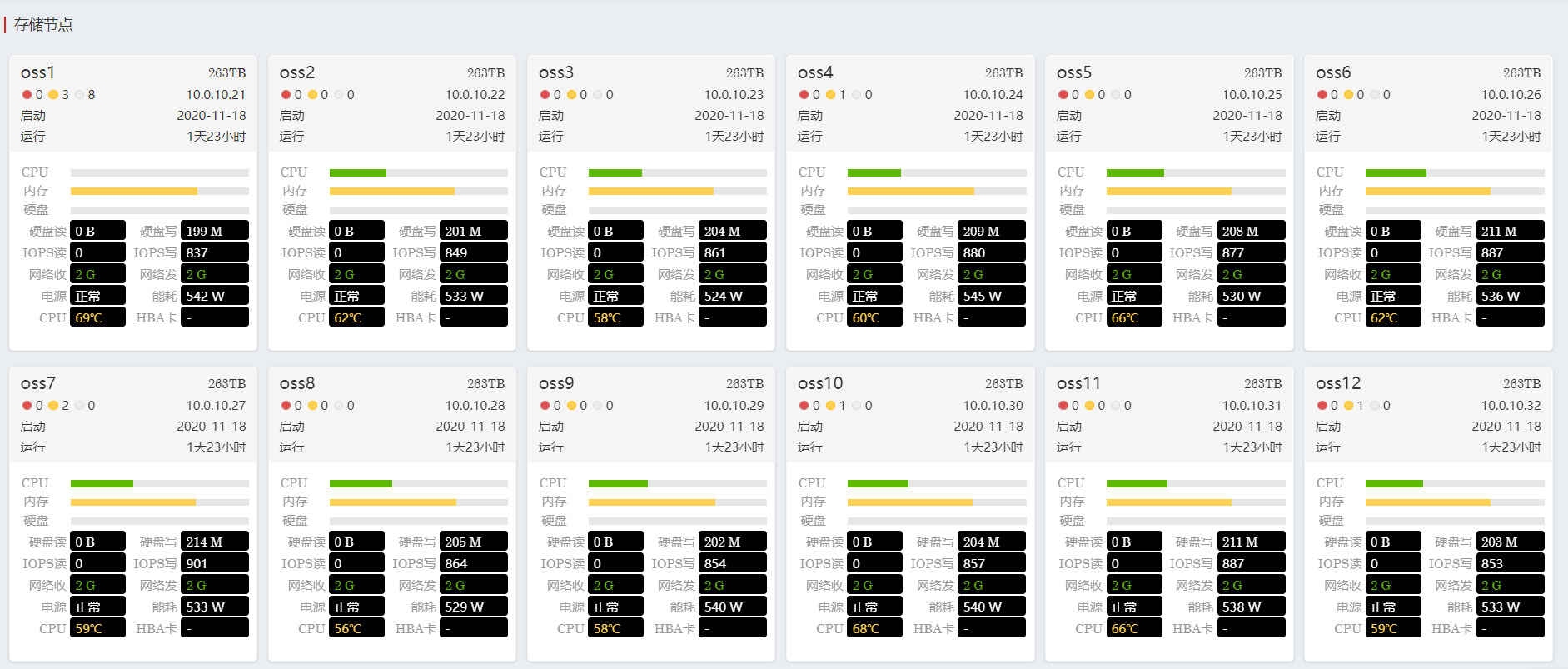Technology Blog
LeoStor Xueliang project video monitoring storage configuration scheme


总体需求
In the Xueliang project, with its high-performance parallel storage capability, LeoStor fully stimulates the original capacity of each mechanical disk, and is compatible with the HDFS file protocol. It allows users to record and broadcast, video structured analysis, video enhanced analysis and other businesses, without purchasing another set of storage equipment dedicated to video analysis, reducing customers' investment by half. At the same time, the system provides high-performance unified storage protocol for NAS and objects, Provide strong endogenous power for the construction of customers' video center.
A city upgraded 5000 HD cameras in the first phase of technical transformation. The HD camera has 1080P resolution, 6Mbps code stream, and needs to store data for 3 months. The same storage needs to support online real-time video structure and AI analysis, and support compatibility with S3 object storage protocol:
| Item | Data |
| Code stream | 6Mbps |
| Single camera/3 months | 3.8TB |
| 5000 cameras/3 months | 18,896TB |
Storage design
Video monitoring is based on MB video files, supplemented by KB pictures. Considering the characteristics of video services, the failure rate of storage servers and the maximum effective space utilization, LeoRaid 2+M, 4+M, 8+M, 16+M (M=1, 2, 3, 4) and other modes are more suitable for video storage. It is recommended to use the directory of LeoRaid 16+2 redundancy scheme, which can allow two storage nodes or two hard disks to fail at the same time.
- Capacity after redundancy: LeoRaid 16+2, availability rate is 88%, then raw capacity (1)=18896TB ÷ 88%=21472TB;
MDS节点配置
Due to the large number of storage nodes, the system is configured with four metadata nodes to ensure the responsiveness of the system; If there is AI video analysis, it is recommended that each metadata node be configured with 2TB SSD hard disk, and select U2 SSD to improve read and write response.
| Item | To configure |
| Number of nodes | 2 or 4, 4 recommended |
| CPU | 2 * Silver/Gold CPU |
| Memory | 64GB |
| Metadata disk | 2 * 1TB SATA / U.2 SSD HBA |
| network | 2 * 10GE |
OSS node configuration
In the LeoRaid 16+2:2 scheme, the minimum number of security nodes is 16+2+2=20 nodes; In order to maximize the number of access cameras for each node and quickly repair the faulty disk, it is recommended to configure 2 * 25GE SFP28 for each storage node to ensure that the hard disk and network bandwidth match.
| Single hard disk capacity | Number of hard disks | 24 drawer device | 36 drawer device |
| 8TB | 2,684 | 112 | 75 |
| 10TB | 2,148 | 90 | 60 |
| 12TB | 1,790 | 75 | 50 |
| 14TB | 1,534 | 64 | 43 |
| 16TB | 1,243 | 52 | 35 |
Note: The green area represents optional, and Seagate enterprise disk is recommended for mechanical disk.
-
Hardware reference configuration
- Model: DF3600
- Equipment form: 4U 3.5" 36 drawer equipment;
- Number of nodes: 35;
- Storage hard disk: 36 * 16TB Seagate enterprise SATA mechanical disk;
- Others: 2 * silver CPU, 64G memory, 2 * 10GE or 2 * 25GE;
It is recommended to select Shengke E680-48Y8C, which has 48 10GE/25GE and 8 100GE ports.
Project case
The "Xueliang Project" project in a provincial capital city uses 2+38 4U36 disk devices, Seagate 8TB mechanical disk, a total raw capacity of 10PB, a single volume usable capacity of 10PB, and LeoRaid 8+2 data protection mode, video monitoring and video structured AI analysis are all in one volume. In each storage node, users install Linux themselves KVM, build virtual machine system, save more than one million investment for the project. A single KVM virtual machine can support no less than 200 channels of full disk read, write, and delete high-definition video streams without delay. On average, each hard disk supports no less than 50 channels of full disk read, write, and delete high-definition video streams without delay. The KVM virtual machine has millisecond level failover.


The LeoStor monitoring screen provides intuitive and detailed monitoring information for operation and maintenance, and can sense the overall energy consumption of the system in real time. System events are transmitted to the customer's unified monitoring system through SNMP protocol.


In the video monitoring system, such as Haikang, Dahua, Yushi, Kodak, etc., because the NAS storage based on the block device has a lower capacity storage boundary, such as 512GB, it is necessary to group the cameras in advance, and then create a directory for each camera to ensure that the flow of each group does not exceed the storage boundary of the block device, which is very inconvenient for application deployment. When the camera is upgraded and the code flow increases, In order not to waste space, you need to shut down and re-division the directory; The single-volume 300PB capacity of LeoStor does not need to group the cameras in advance, but only needs to create a directory for each camera. Of course, quotas can also be set for each camera to avoid crossing the border. When upgrading the camera, there is no need to divide the directory again, just need to change the quota online.